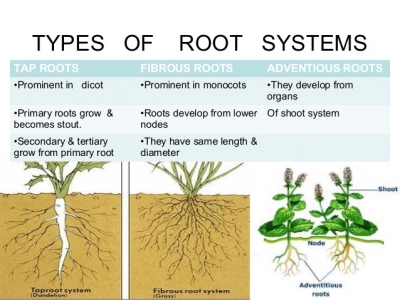
Just as there is diversity in the leaves, branches and trunks of trees, there is variety in their root system too. Not all plants have similar root systems.There are many types of root systems-taproots, fibrous roots, adventitious roots etc.
In taproot system, the main root grows down vertically, and from the root, many smaller lateral roots diverge. These roots reach deep into the ground, and sometimes, store the nutrients produced by the plant. Carrots have taproots that store the plant’s nutrients. If we observe it carefully, we can see that the most familiar part of the carrot is a taproot. Fibrous root systems consist of an elaborate network of small roots. Usually, fibrous roots develop uniformly. Many smaller roots branch out from each of the individual roots, forming a fibrous bundle. A common example of fibrous roots is grass. The roots of grass allow the plant to access a large area of soil for water and minerals.The fibrous roots function as a strong anchor for the plant too.
While both taproots and fibrous roots arise at the base of the plant shoot during germination, some roots develop at the stems or leaves of the plant, which appear above ground. Such roots are known as adventitious roots. Climbing plants such as ivy have adventitious roots, which anchor them to walls or trees.
Highly specialized roots developed by parasitic flowering plants are known as Haustoria. These plants attach themselves to a host plant and extract nutrition from it.
Picture Credit : Google




